Complete Solutions to Level-1 of chapter GEOMETRY of Class 7 book with complete answers and questions
| Class 7 | MATHS |
| Chapter | GEOMETRY |
| PEARSON IIT JEE FOUNDATION | Level-1 |
| Number Of Questions | 24 |
| Academic Year | 2023-24 |
How many excircles can be drawn for a triangle ?
View SolutionIn `DeltaABC, ` if `angleA=60^(@),angleB=50^(@), and angleC=70^(@)`, then find the longest side of the triangle ABC.
View SolutionIn a rhombus, if diagonals are equal, then the rhombus necessarily will be ____
View SolutionWhat do you call the triangle whose two of its angles are `40^(@) and 70^(@)`
View SolutionThe measure of the side of a `DeltaPQR` are integers in cm. If two of its sides are 1 cm each. Find the perimeter of the triangle.
View SolutionIf the angles of a linear pair are equal, then each angle is _____
View SolutionABCD is rhombus and `angleBAD=60^(@)`. The measure of `angleCAB` is _______
View SolutionTwo complementary angles are in the ratio 2:3. Find the larger angle between them.
View SolutionAn angle is thrice its supplement. Find it.
View Solution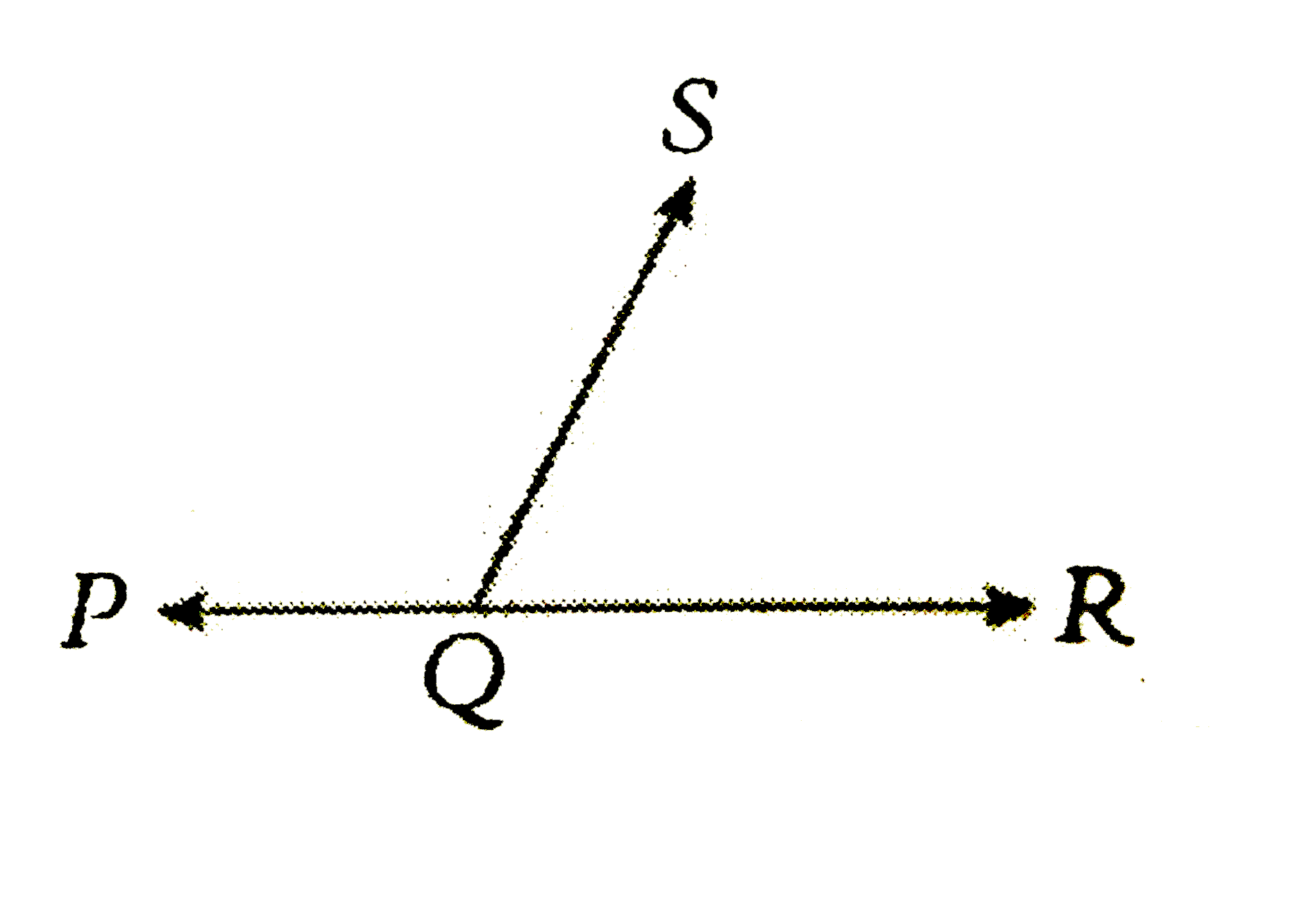
In the above figure, PQR is a straight line and `anglePQS: angleSQR=7:5`. Find `angleSQR`.
View Solution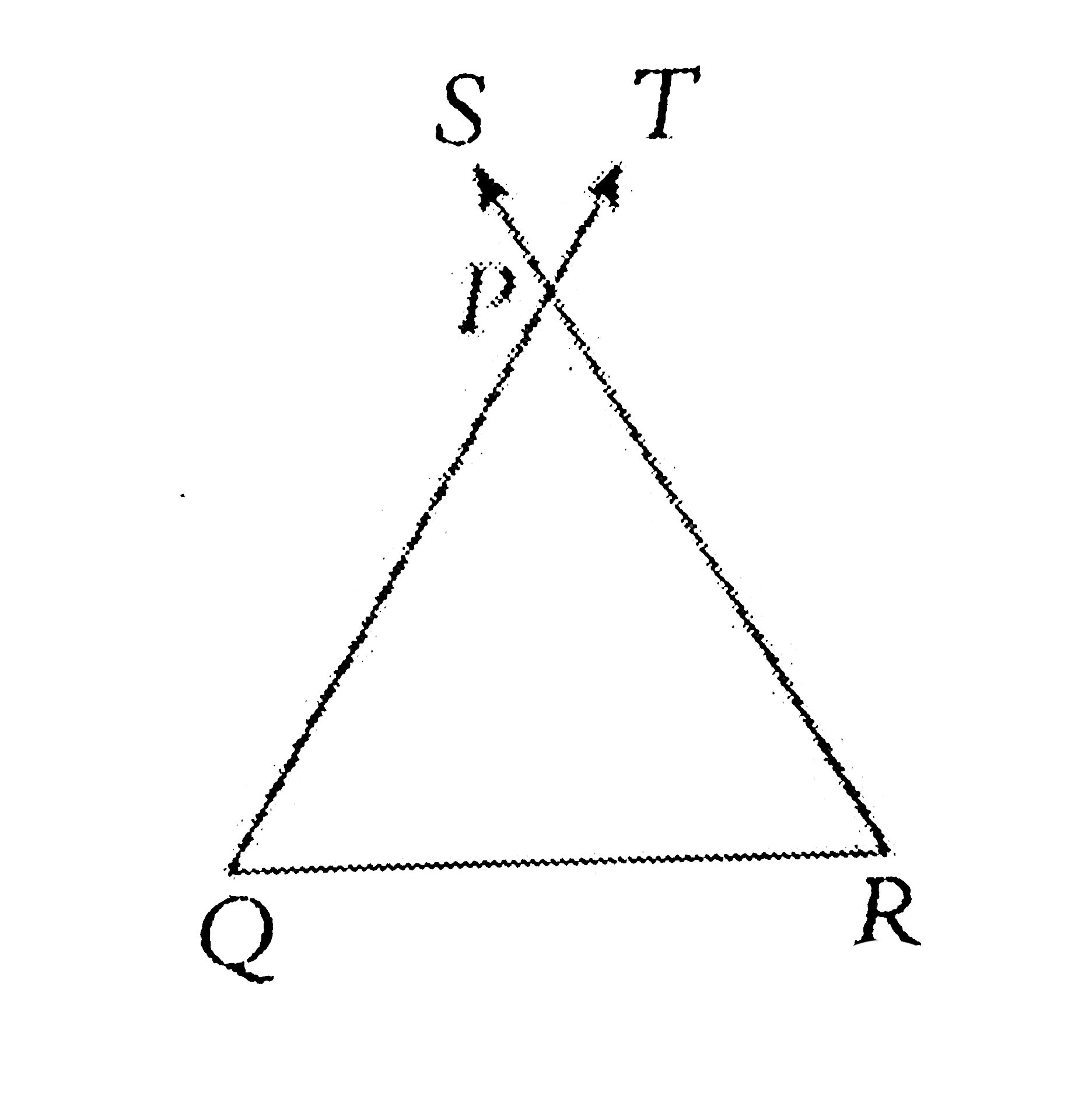
In the figure above, `angleSPT=60^(@) and` PQ=PR. Find `anglePQR`
View Solution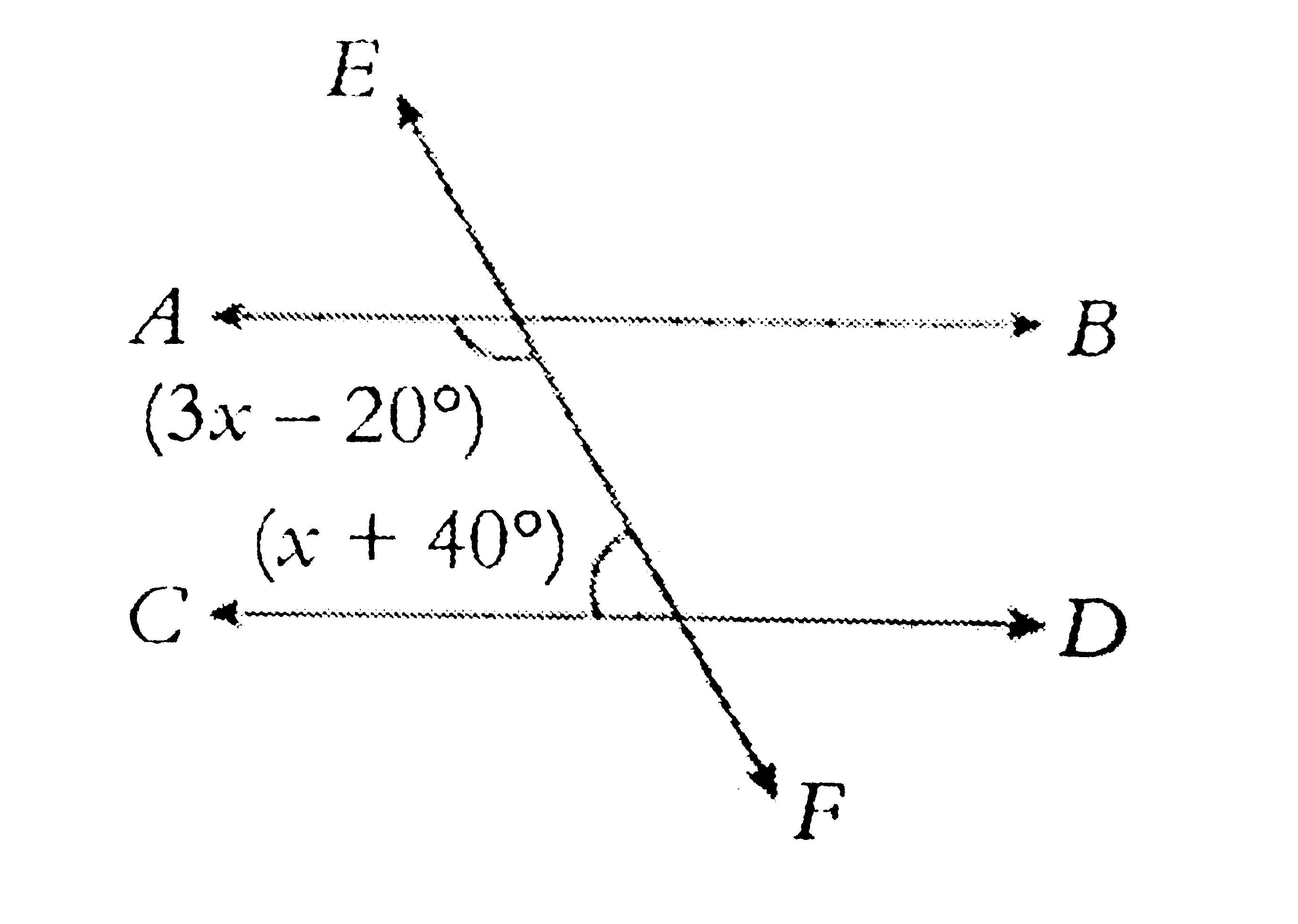
In the figure above, `bar(AB)"||"bar(CD)`. Find the value of x.
View Solution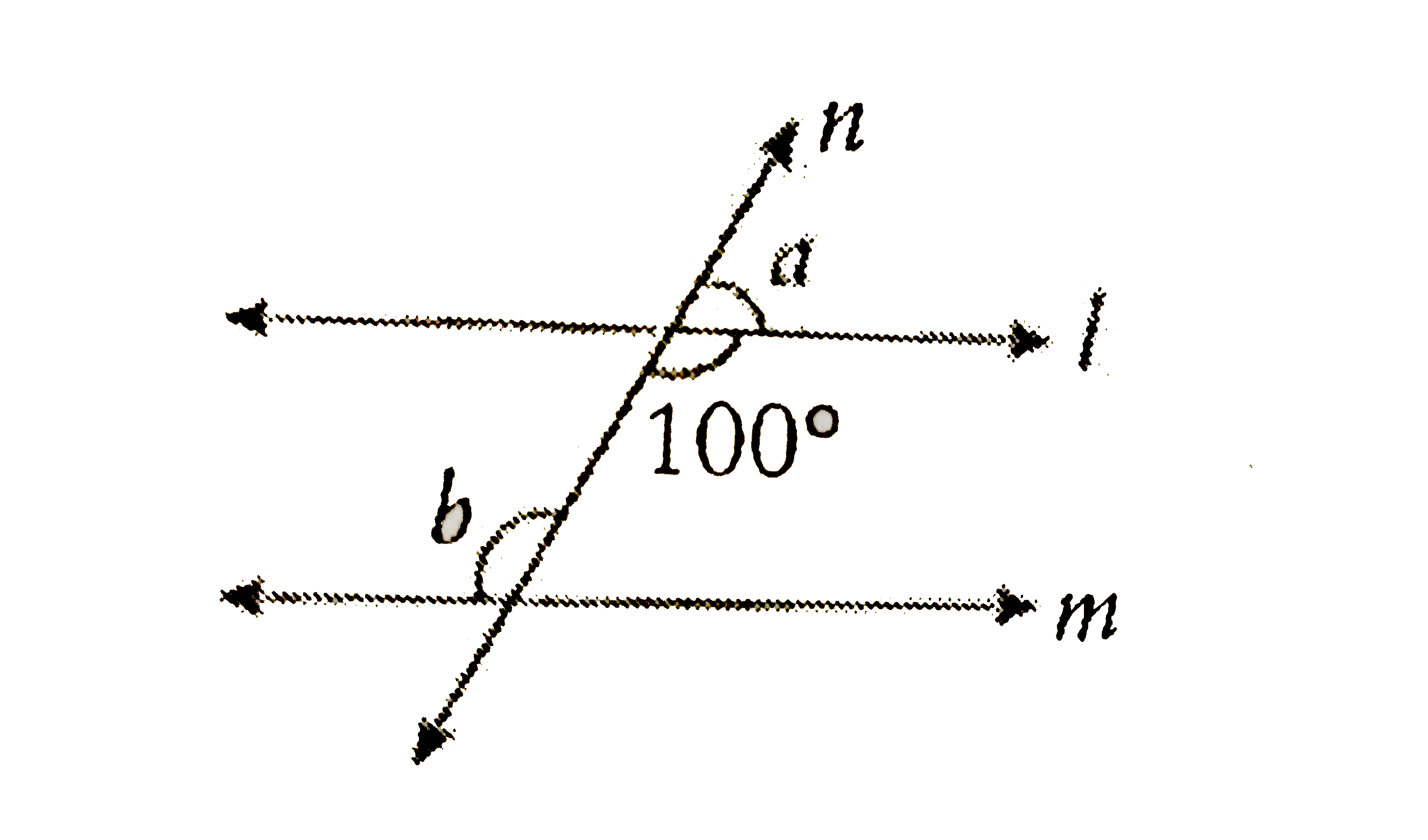
In the figure above, l||m. Find the value of b-a.
View SolutionWhich of the following is/are point symmetric ?
View SolutionWhich of the following has an infinite number of lines of symmetry ?
View SolutionThe sum of an angle and half of its complementary angle is `75^(@)`. Find the angle .
View SolutionThe adjacent angles of a rhombus are `2x-35^(@)` and `x+5^(@)`. Find x.
View Solution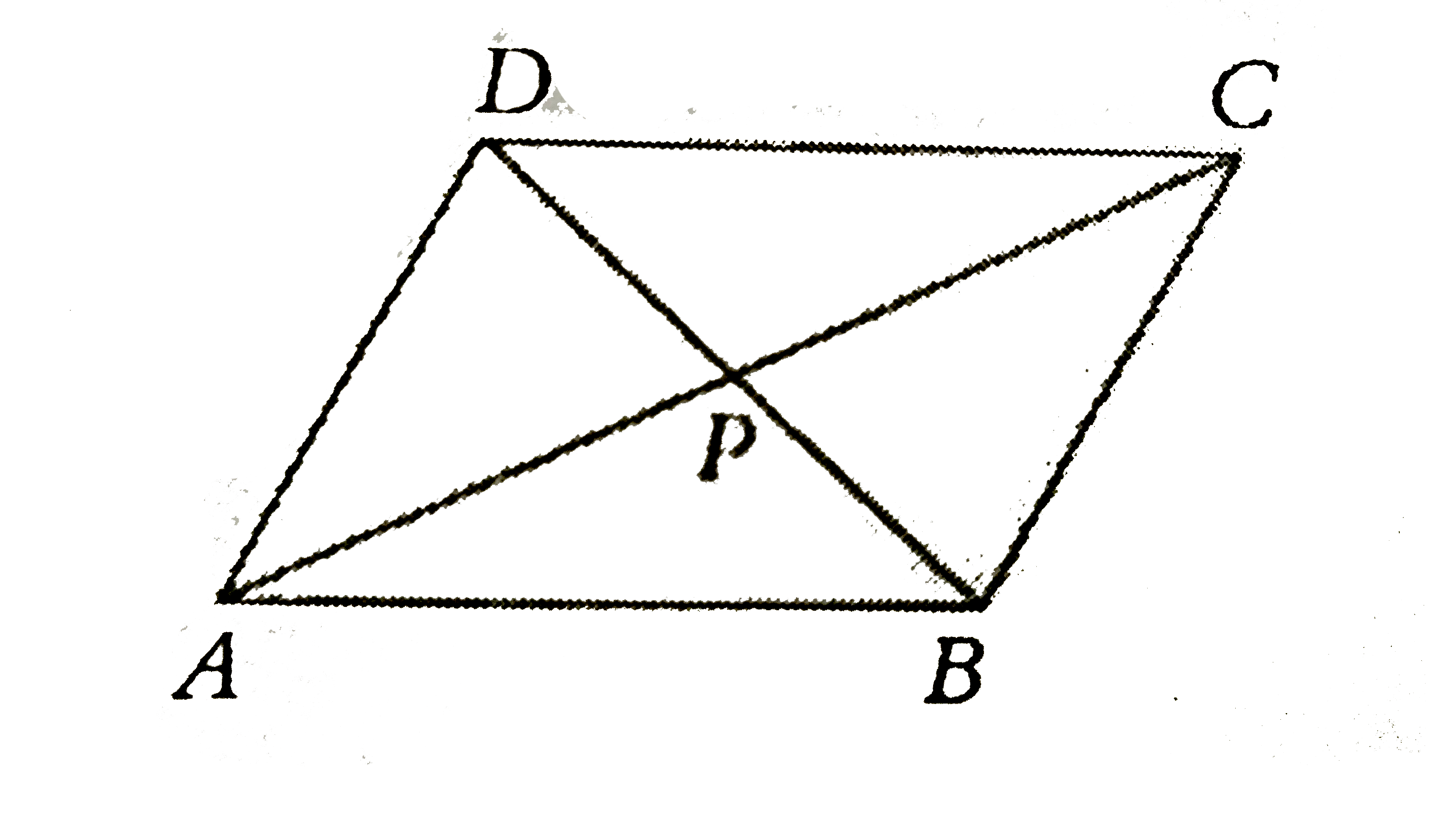
In the figure above, ABCD is a parallelogram, AC=14 cm and BD=10 cm, then AP+BP=_______ cm .
View SolutionThe following steps are involved in finding the largest angle of a quadrilateral PQRS, if `angleP: angleQ : angleR: angleS=1:2:3:4`. Arrange them in sequential order.
(A) `10x=360^(@)impliesx=36^(@)`
(B) Let the angles be `angleP=x, angleQ=2x, angleR=3x, and angleS=4x`.
(C ) The largest angle `=4(36^(@))=144^(@)`
(D) Given `angleP:Q: angleR:S=1:2:3:4`
(E ) `angleP+ angleQ+ angleR +angleS=360^(@)implies x+2x+3x+4x=360^(@)`
View SolutionThe following steps are involved in finding the third side of an isosceles triangle whose two sides are 6 cm and 12 cm. Arrange them in seqential order.
(A) But the difference between two sides is less than the third side.
(B) Since the given triangle is isosceles, the possible measureof the third side is either 6 cm or 12 cm .
(C ) `implies` The measure of the third side is 12 cm.
(D) `:.` 6 cm cannot be the measure of the third side.
View SolutionThe following steps are involvedd in finding the angles of the triangles ABC, when `angleA: angleB: angleC=1:2:3`. Arrange them in sequential order.
(A) Let the angle be `angleA=x, angleB=2x and angleC=3x`.
(B) Given `angleA: angleB: angleC=1:2:3`
(C ) `angleA=30^(@),angleB=2(30^(@))=60^(@) and angleC=3(30^(@))=90^(@)`.
(D) `angleA+angleB+angleC=180^(@)implies x+2x+3x=180^(@)`
(E ) `6x=180^(@)impliesx=30^(@)`
View SolutionThe following steps are involved in finding each of interior angle of 10-sided regular polygon. Arrange them in sequential order.
(A) Each exterior angle `=36^(@)`
(B) Each interior angle `=180^(@)-36^(@)=144^(@)`
( C) Each exterior angle `=(360^(@))/(n)=(360^(@))/(10)` (given n=10)
View Solution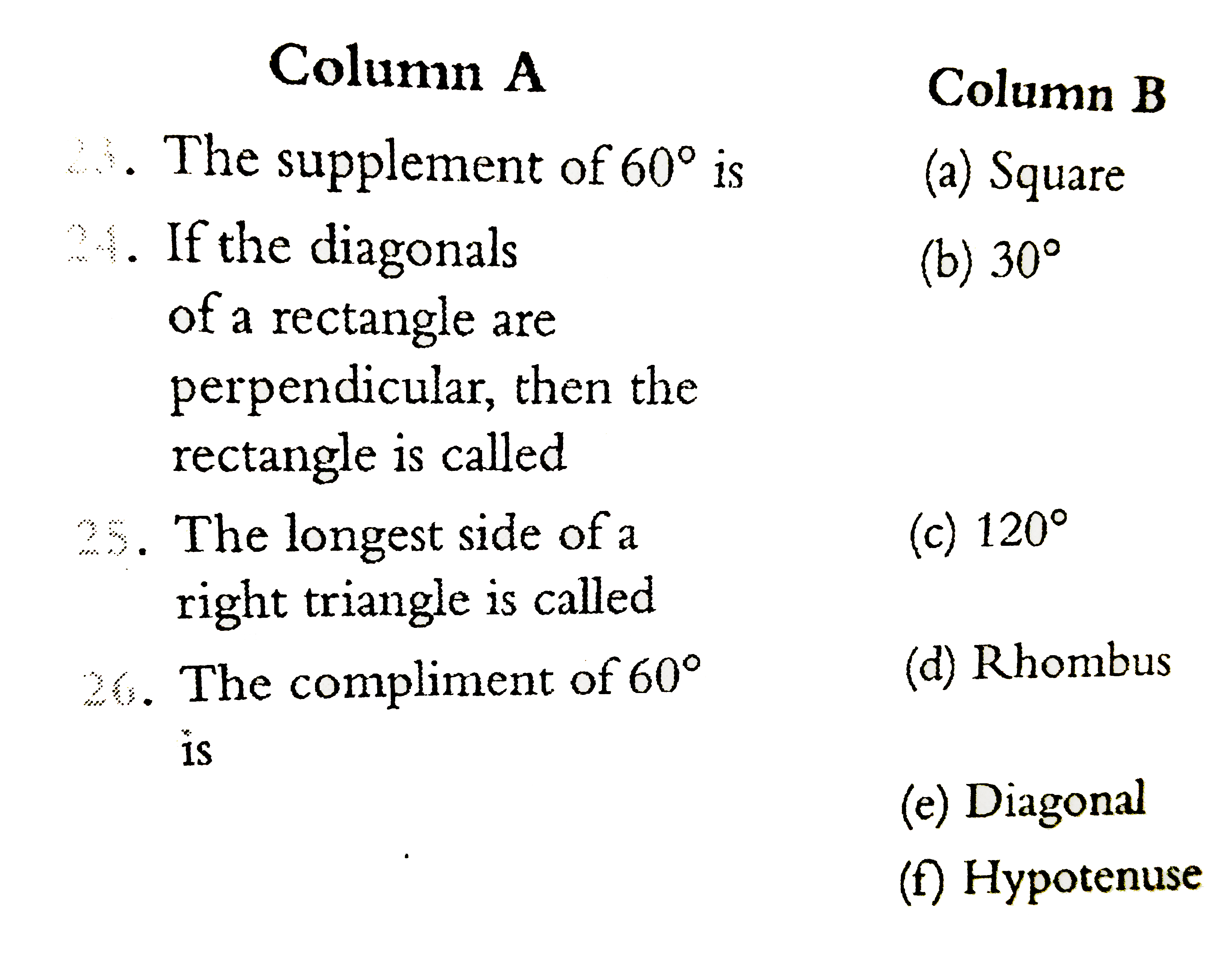
View SolutionMatch the following Column A to Column B
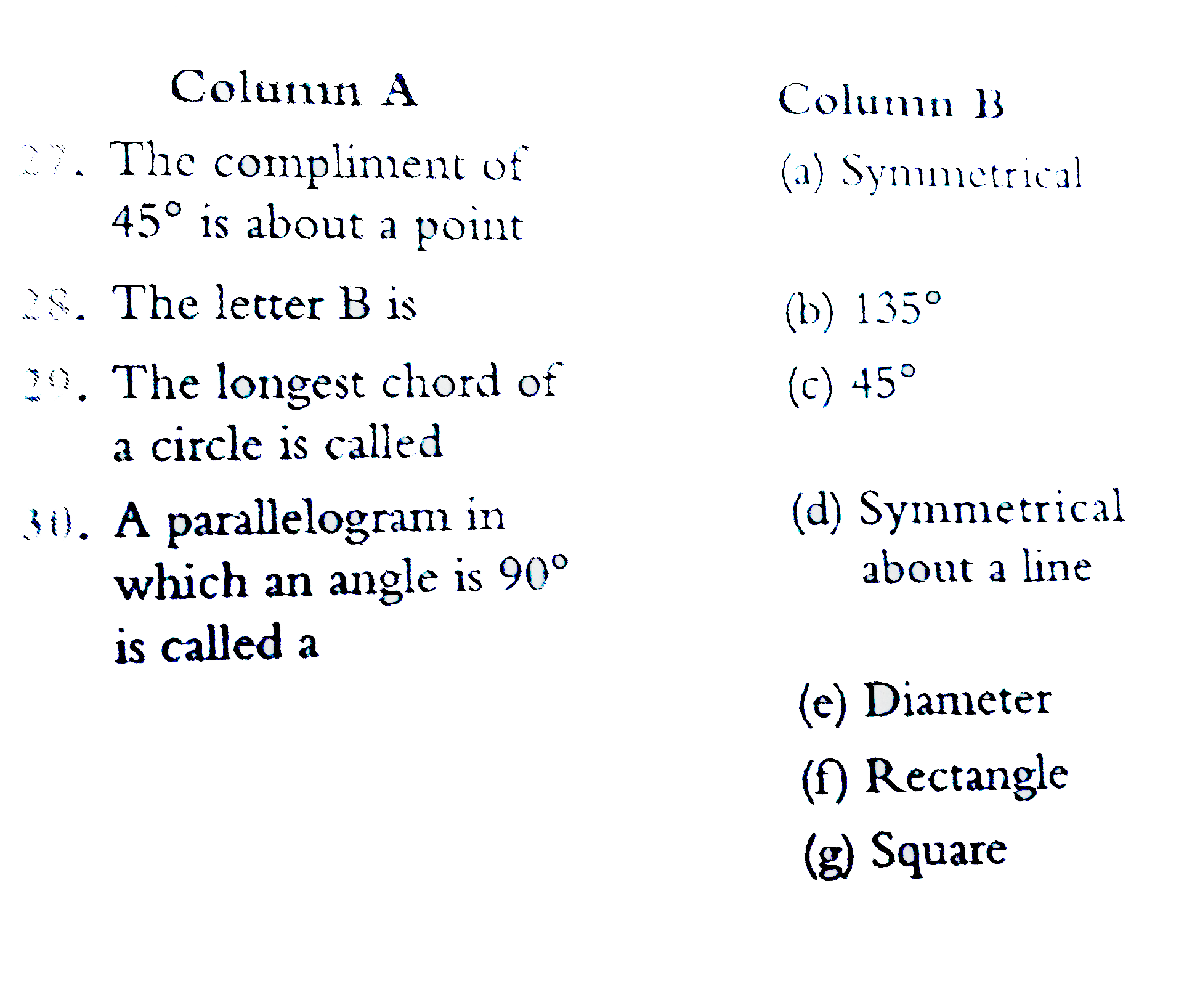
View Solution
Level-1 questions and complete solutions for chapter GEOMETRY of PEARSON IIT JEE FOUNDATION of Class 7